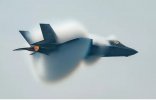That’s okay for now, its commander says, but his service may need to change how it trains and manages EW officers.
The Air Force’s two-year-old electronic warfare wing is more than 400 people short, and that’s okay for now, its commander said Wednesday. But if the wing is going to reach and maintain full operating capability, the service may need to overhaul how it builds its cadre of EW experts.
“It's actually good that I have all these vacancies, because I only have about 50 more seats to give in the facilities that I have today,” said Col. Joshua Koslov, who leads the 350th Spectrum Warfare Wing. “I don't have enough people. I don't have the right facilities, and we're working with the Air Force and [Air Combat Command] to get there.”
But, Koslov added, “I worry that sustaining the wing is going to become hard from a personnel perspective as we divest platforms. We build electronic warfare officers based on platforms, right, when that's not the best way to do that. As we divest platforms, or divert crew members off of platforms, your pool of electronic warfare officers gets a lot smaller.”
Founded in 2021 to focus the service’s electronic warfare efforts, the 350th started with about 1,200 military and civilian personnel plus plans to add about 2,100. Currently, the wing has more than 400 civilian and military vacancies to fill, its commander said at an Air and Space Forces Association event on Wednesday.
Koslov, who took command last summer, said he needs people who aren’t just technically skilled, but who can teach the rest of the U.S. military how to put their esoteric capabilities to use...
...Moreover, the wing’s 513th Electronic Warfare Squadron, which focuses on F-35 mission data, will work closely with the United Kingdom, Australia, and other partners to fine-tune their approach, he said.
One unit in particular that needs more people is the wing’s planned 950th Spectrum Warfare Group, Koslov said. Slated to stand up in fiscal 2027 at Robins Air Force Base, Georgia, the 950th will take over the Combat Shield effort, which tests aircraft EW systems.
“And that group is going to be solely focused on EW assessment across the Air Force's enterprise,” he said. “That'll be things like large-force exercises, a much greater fifth- and sixth- gen. capability of assessment and then truly an end-to-end assessment, from a war reserve mode being detected, through the process of getting reengineered and put back into the jet as a piece of combat capability.”
The 350th has three main priorities: assessing its own EW capabilities, developing waveforms for offense and defense, and rapidly reprogramming weapons and systems to close vulnerabilities and add capabilities. So far, it has reprogrammed more than 70 types of aircraft, weapons, and other equipment in at least 27 countries, he said.
“Just to put it in perspective for you, we do every single F-35. We reprogram every single F-35 in the world: allies, friends, partners, etc.,” Koslov said.
The unit also upgrades older aircraft, and maintains a subunit, the 850th Spectrum Warfare Group, to develop and manage databases and tools used to reprogram Air Force assets...."












